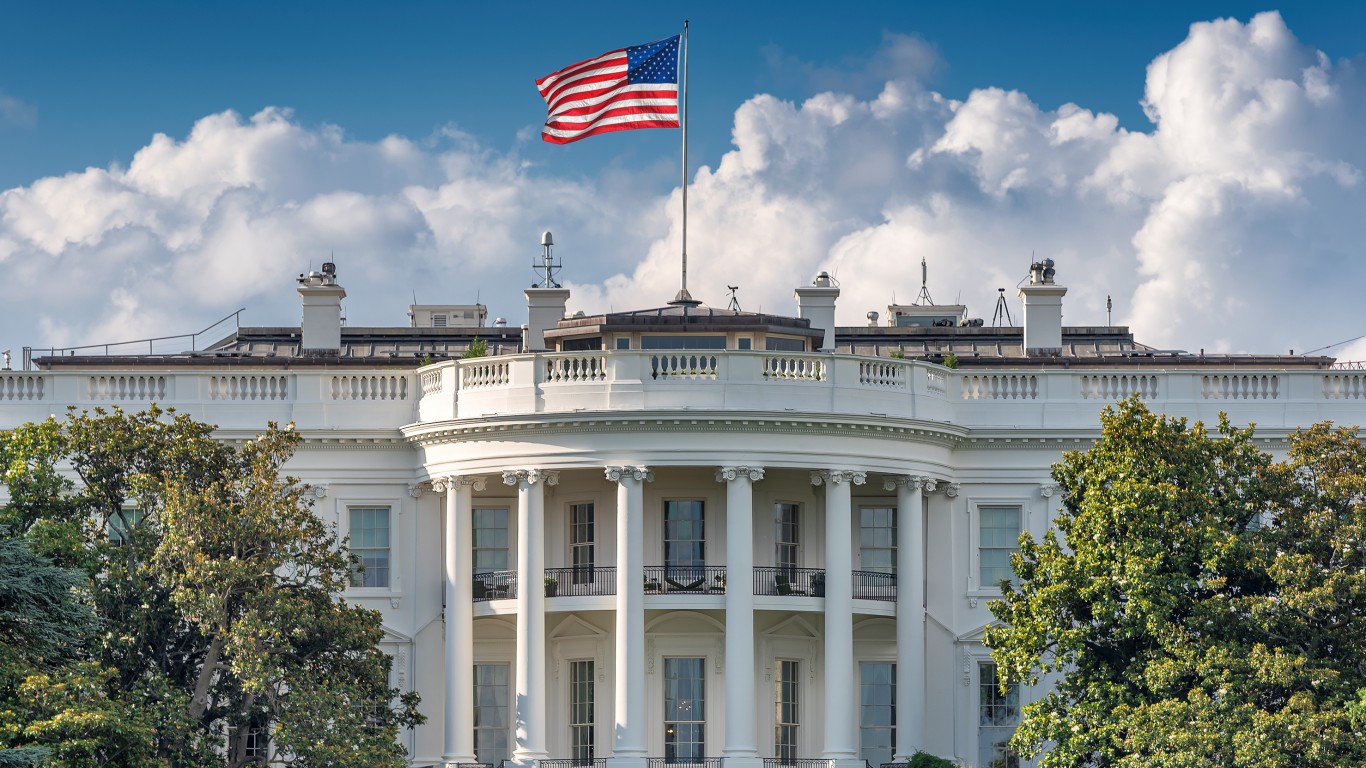
Since the beginning of the 20th century, the United States has performed hundreds of military interventions in other countries, with some of these interventions becoming all-out wars or occupations. In international law, an occupation occurs when a territory comes under the control of a hostile military. (The U.S. government is involved in secret wars in 15 countries.)
To determine 15 times the U.S. occupied another nation, 24/7 Wall St. used U.S government and military sources, including the Office of the Historian, as well as other online sources. The list is not exhaustive. Nations occupied by joint Allied forces during World War II were excluded as were occupations that concluded before the 20th century.
During the Banana Wars, a series of conflicts in the period following the Spanish-American War, the U.S. occupied numerous countries in Central America and the Caribbean, including Cuba, which had been surrendered by Spain. One of the primary goals of these occupations was securing U.S. business and trade interests by maintaining political control over the region.
The U.S. also occupied the Philippines after Spain ceded control of the islands, resulting in war as the Filipinos fought to secure independence rather than fall into another chapter of colonial rule. The Philippine-American War resulted in the deaths of over 20,000 Filipino soldiers and 200,000 civilians. After the war ended in 1902, U.S. occupying forces remained for 44 more years before recognizing the country’s independence.
During the aftermath of World War II, the U.S. maintained an occupying presence in Japan in order to restructure the government and prevent further militarization, as well as in Korea, to oversee the demobilization of the Japanese imperial army. More recent occupations include the drawn-out wars in Iraq and Afghanistan. (Here are horrifying images of the Iraq War.)
Click here to see 15 times the U.S. occupied another nation.
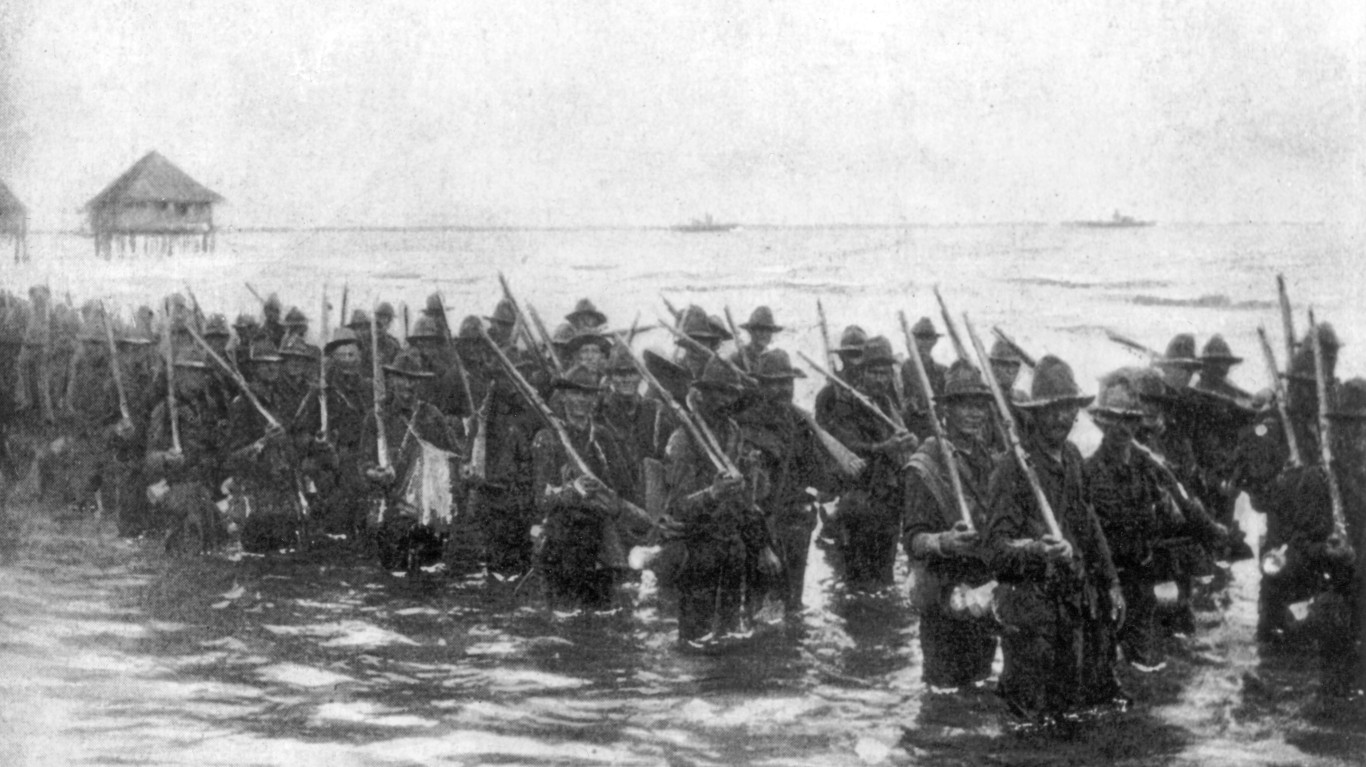
Philippines
> Date: 1898-1946
The U.S. acquired the Philippines after the Spanish-American War and declared military rule. Despite initial promises of independence, colonial rule lasted nearly 50 years and saw multiple Filipino rebellions against U.S. rule. The occupation ended with the formation of the Republic of the Philippines in 1946, marking the country’s independence from the U.S.
[in-text-ad]
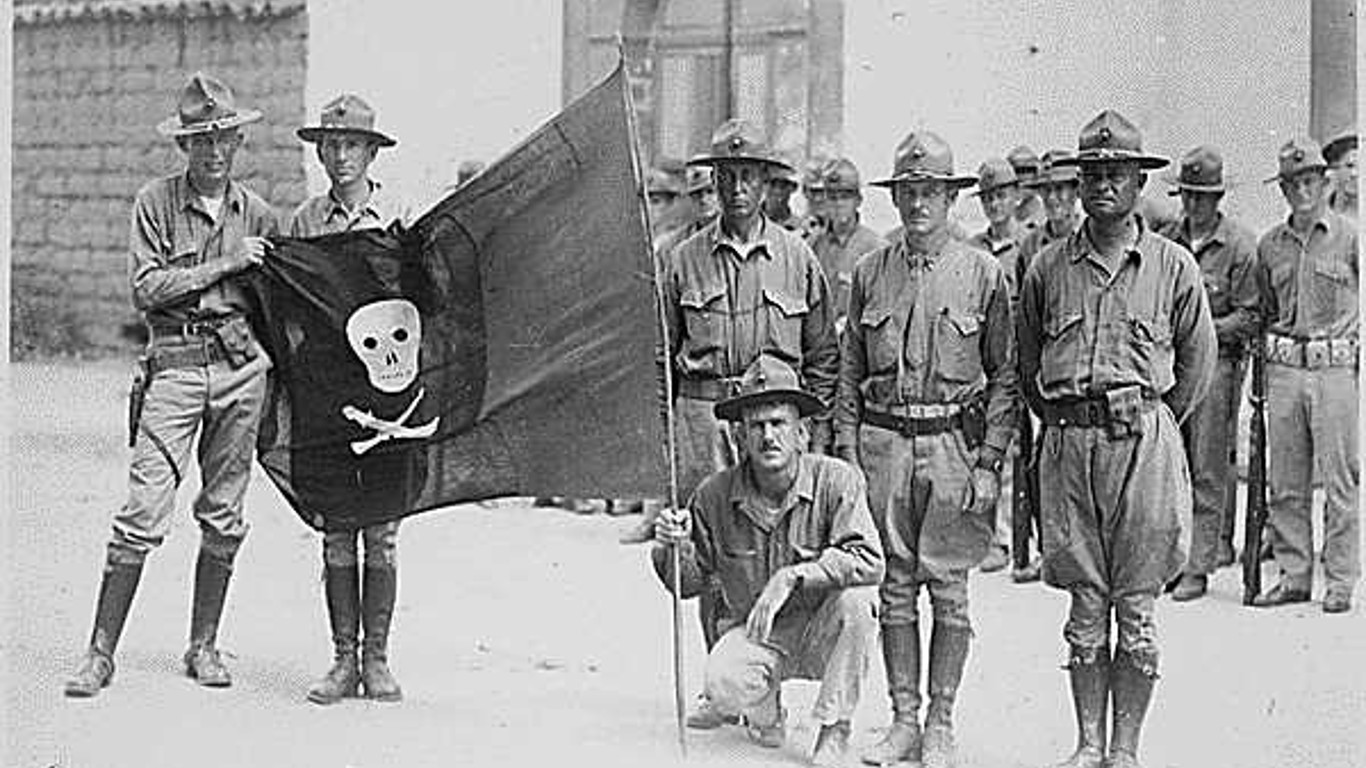
Cuba
> Date: 1906-1909
The U.S. occupied Cuba from 1906 to 1909 as part of the Banana Wars, aiming to prevent internal local conflict, protect American economic interests in the region, and ensure free elections. The occupation ended after José Miguel Gómez’s election as president in November 1908, which signaled Cuba’s stability and led to the withdrawal of American troops by February 1909.

Nicaragua
> Date: 1912-1933
The U.S. occupation of Nicaragua from 1912 to 1933 was part of President Theodore Roosevelt’s “Big Stick” policy aiming to advance U.S. interests, including access to the country’s natural resources. Though the number of Marines stationed there fell considerably for a while, depending on conditions, the occupation truly ended when President Herbert Hoover’s administration began to withdraw the U.S. 5th Marine Regiment. Ahead of the withdrawal, the Nicaraguan Guardia Nacional, a combined military and police force, was trained and equipped by the departing Americans in an effort that it remains loyal to U.S. interests.
Veracruz, Mexico
> Date: April 21-November 23, 1914
During the Mexican Revolution, the U.S. occupied Veracruz from April to November 1914 after the Tampico Affair, which started when Mexican forces had temporarily detained American soldiers. Upon their release, the Americans, approved by President Woodrow Wilson, insisted on a 21-gun salute, which Mexican President Victoriano Huerta refused to perform. The U.S. then sent in forces, aiming to prevent the delivery of weapons to Huerta’s regime. This intervention contributed to Huerta’s eventual resignation in July 1914.
[in-text-ad-2]

Haiti
> Date: 1915-1934
The U.S. occupation of Haiti from 1915 to 1934, part of President Woodrow Wilson’s interventionist policies, aimed to maintain political and economic stability in the area after the assassination of the Haitian president. The U.S. was concerned about foreign influence, particularly from Germany, and aimed to secure business interests. The occupation ended in 1934 with the transfer of authority to the U.S.-created Haitian Constabulary.
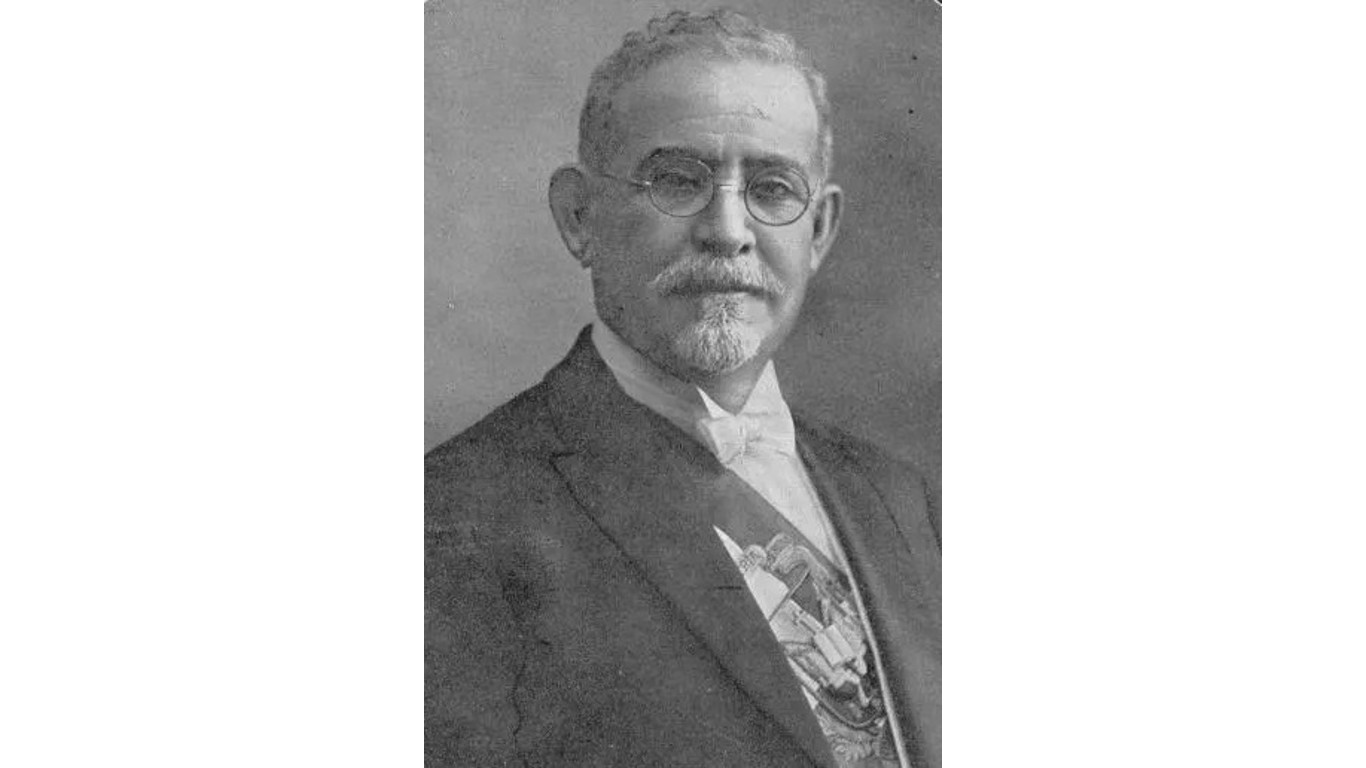
Dominican Republic
> Date: 1916-1924
The U.S. occupied the Dominican Republic from 1916 to 1924 due to concerns about possible German use of the country during World War I. The invasion was opposed both internationally and by Dominicans. The U.S. appointed a provisional president in 1922, and the last U.S. forces left the country in 1924 after the presidential election of U.S. ally Horacio Vásquez Lajara.
[in-text-ad]
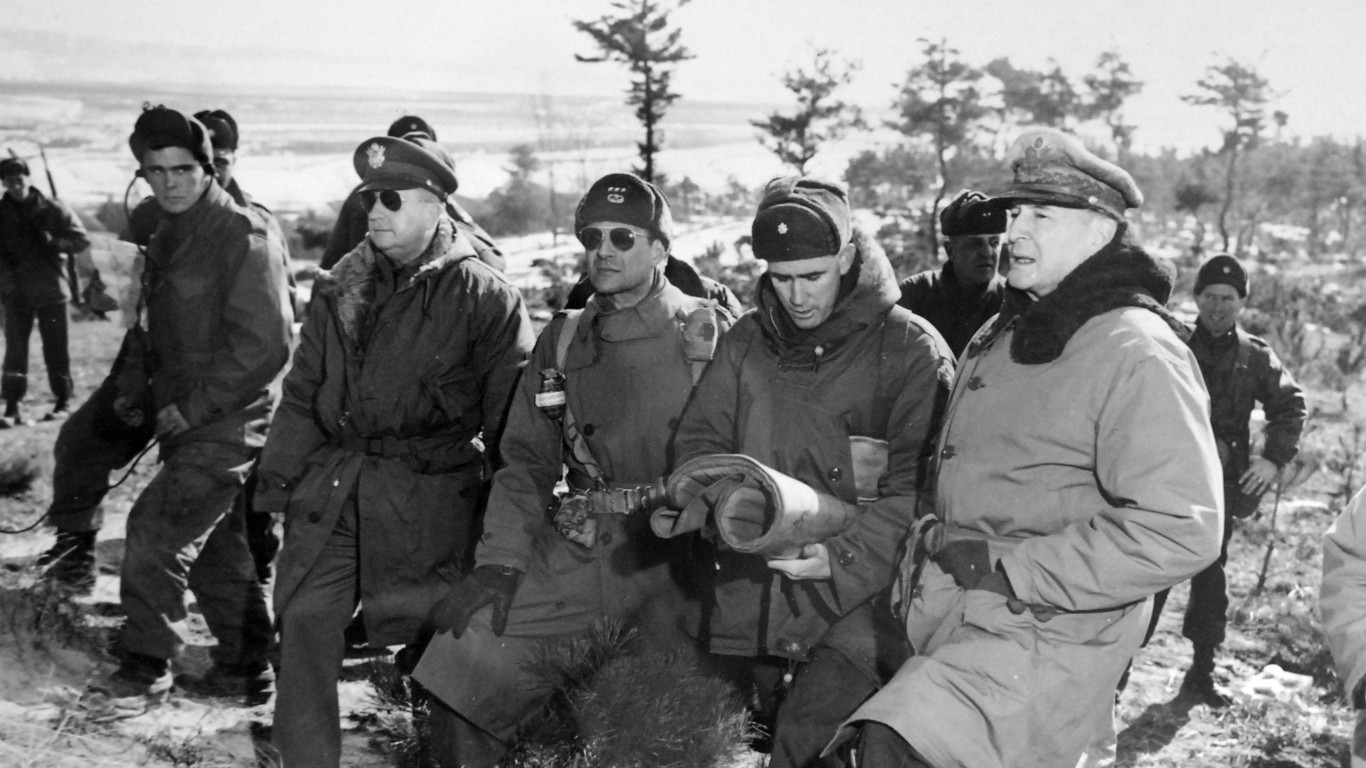
Japan
> Date: 1945-1952
The U.S. occupation of Japan from 1945 to 1952, following World War II, was led by General Douglas A. MacArthur, who enacted military, political, economic, and social reforms. The goal was to demilitarize and democratize Japan, reforming its economy and society, while preventing future militarization. The occupation ended with the signing of the Treaty of San Francisco in 1951, restoring Japanese sovereignty.
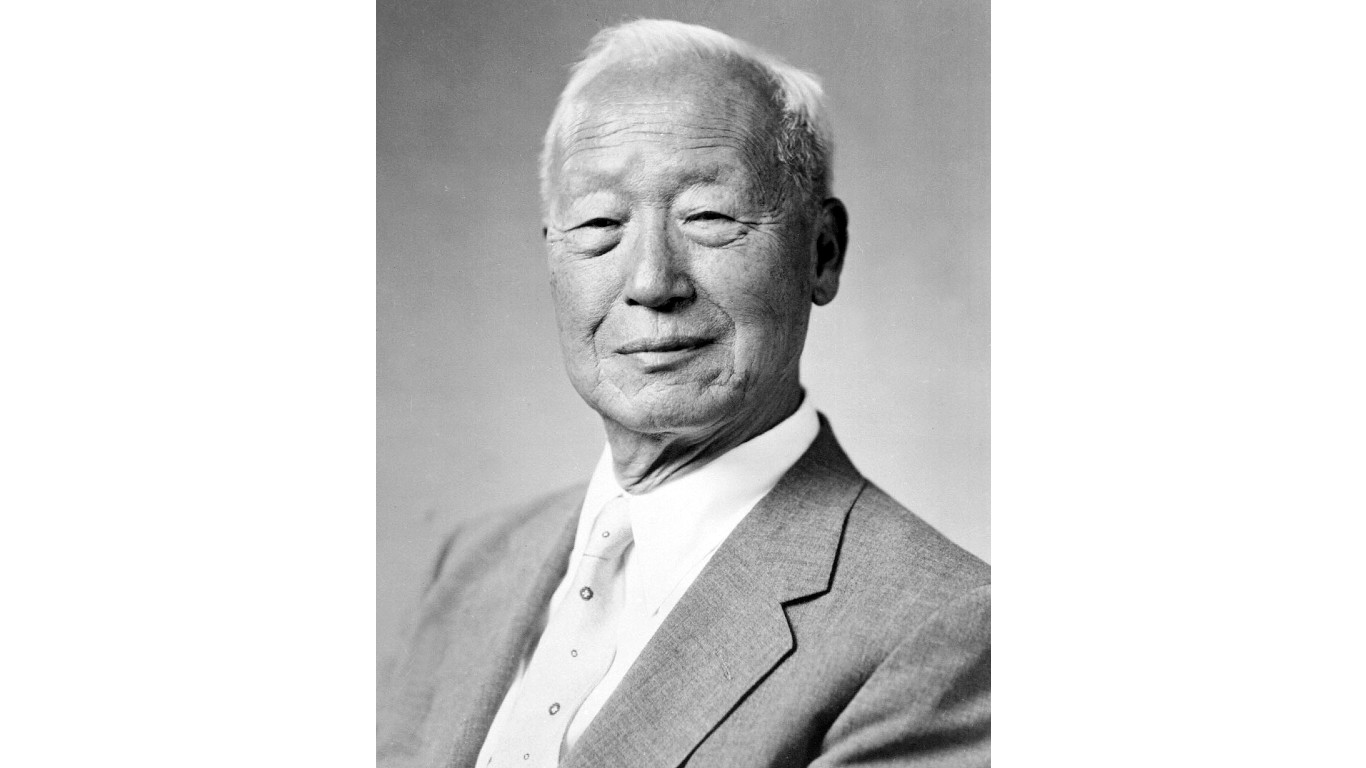
Korea
> Date: 1945-1948
The U.S. occupation of Korea from 1945 to 1948 was part of the larger context of the Cold War. The U.S. and the Soviet Union divided Korea along the 38th parallel to supervise the exit of Japanese forces. The U.S. aim was to contain communism, backing the government of Syngman Rhee in South Korea. The occupation ended with the formation of the Republic of Korea in the south.
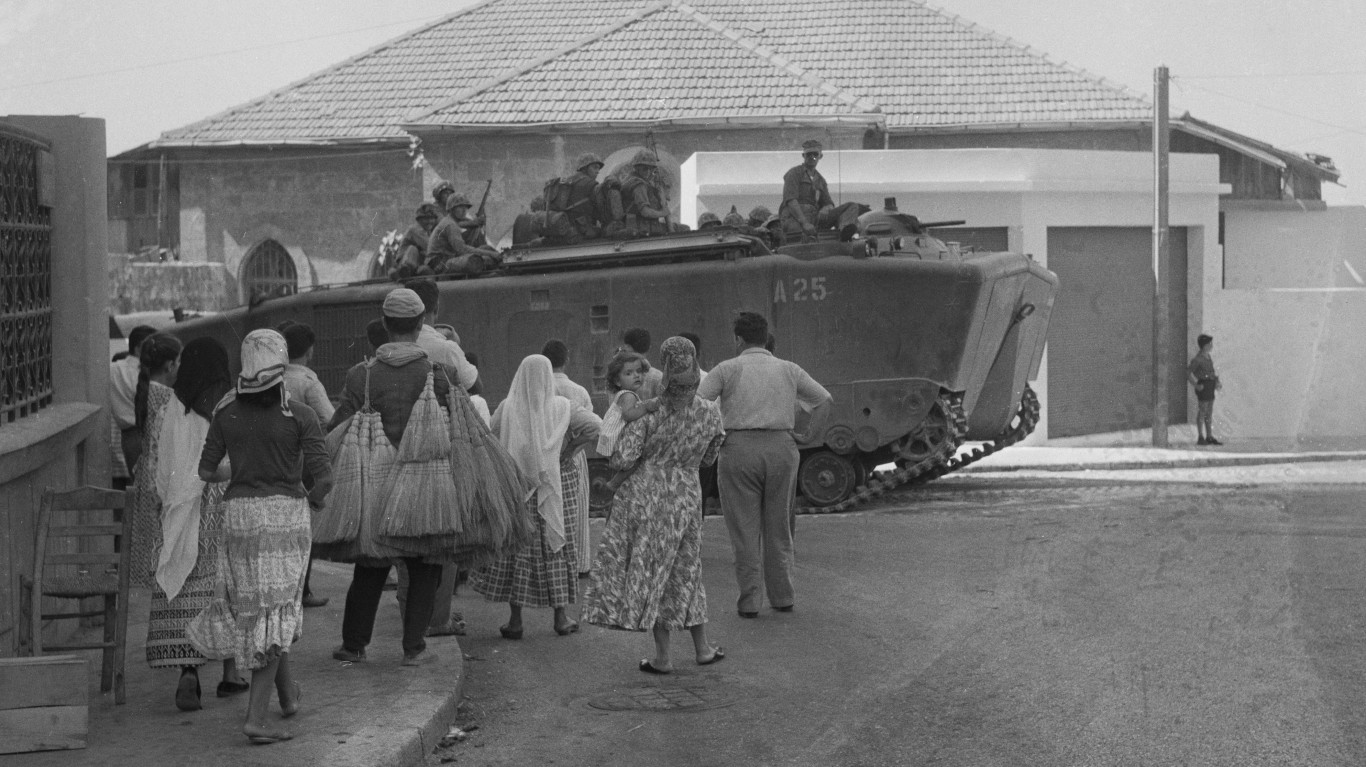
Lebanon
> Date: July 16-Oct. 25, 1958
During the 1958 Lebanon Crisis, U.S. forces landed in Beirut under Operation Blue Bat to stabilize the pro-Western government against leftist opposition and a perceived threat of nationalism. The military intervention ultimately led to the compromise election of moderate President Fouad Chehab, largely preserving Lebanon’s political balance.
[in-text-ad-2]
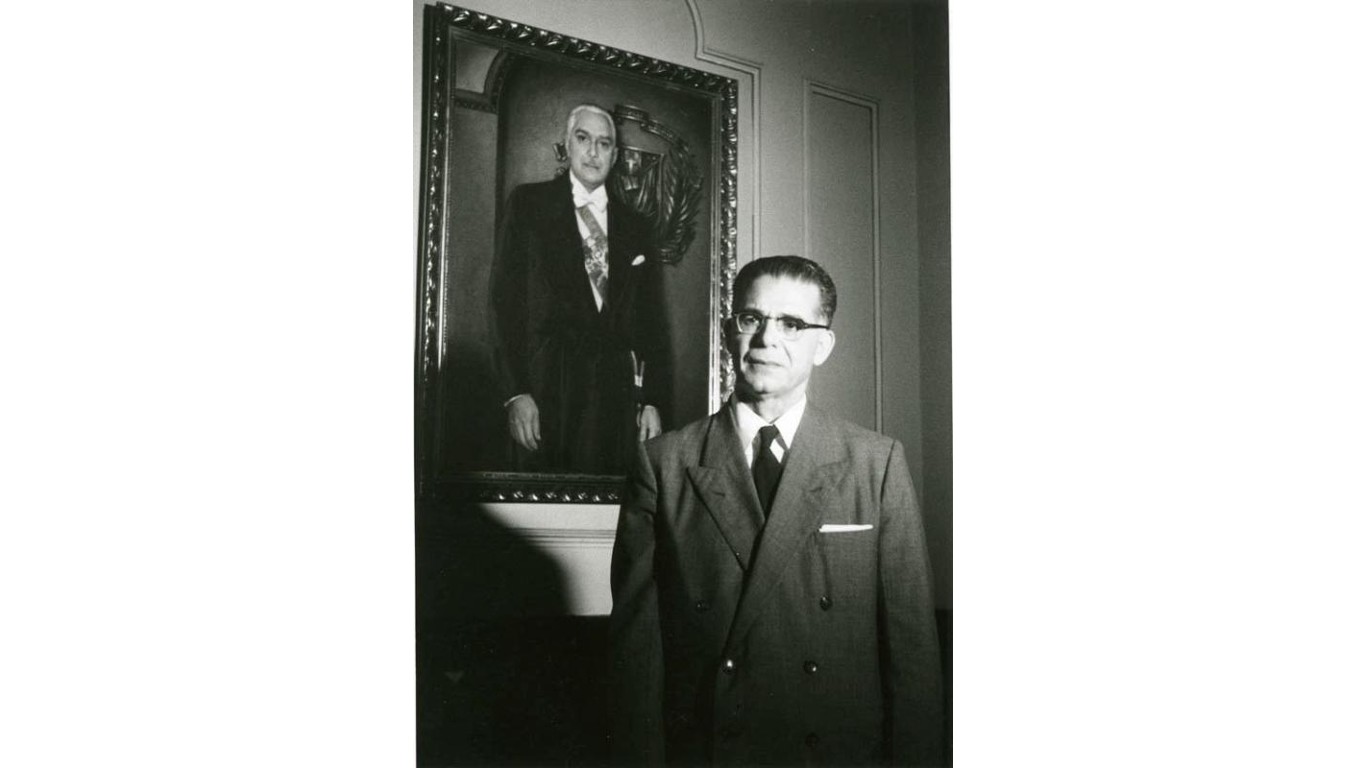
Dominican Republic
> Date: 1965-1966
The U.S. military again occupied the Dominican Republic from 1965 to 1966 as a part of Operation Power Pack. The goal was to prevent the establishment of a communist dictatorship and to protect American lives and property in the country, but it violated the Dominican Republic’s sovereignty. The occupation ended with the appointment of U.S.-backed president Joaquín Balaguer.
Grenada
> Date: Oct. 25-29, 1983
The U.S. invasion of Grenada, named Operation Urgent Fury, took place from Oct. 25-29, 1983. The U.S. aimed to overthrow what it saw as a communist collaborator government, justified publicly by the need to protect U.S. students. The occupation ended with the appointment of an interim government preceding the 1984 elections.
[in-text-ad]
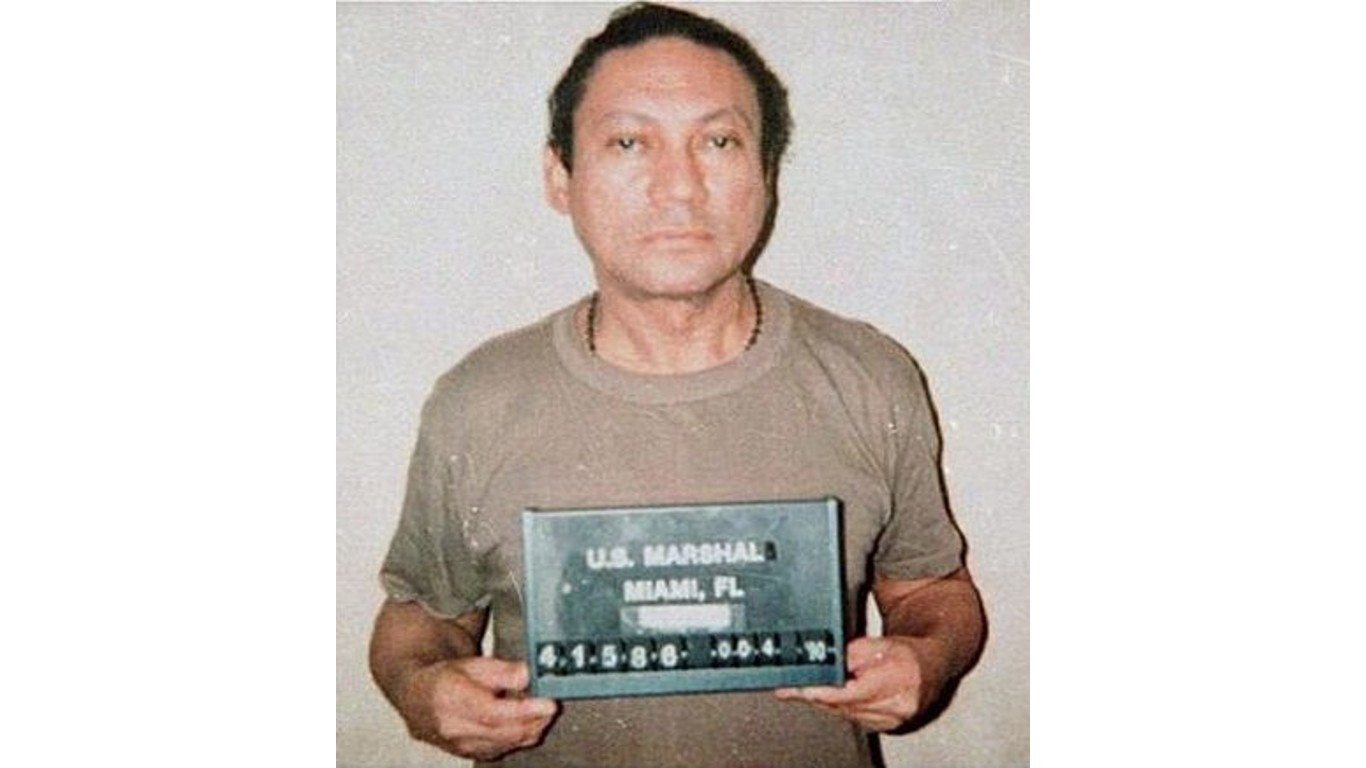
Panama
> Date: 1989-1990
The U.S. occupied Panama from December 1989 to January 1990 was part of Operation Just Cause with the aim of overthrowing military dictator Manuel Noriega, who was accused of drug trafficking, suppressing democracy, and endangering U.S. nationals. The Panamanian Defense Forces were promptly defeated, leading to Noriega’s surrender on Jan. 3, 1990.

Haiti
> Date: 1994-1995
Another U.S. intervention in Haiti took place from 1994 to 1995, as part of Operation Uphold Democracy, which aimed to restore democratically elected President Aristide after a military coup led by Lieutenant General Raoul Cedras. The occupation ended with the military junta surrendering power and facilitating Aristide’s return.
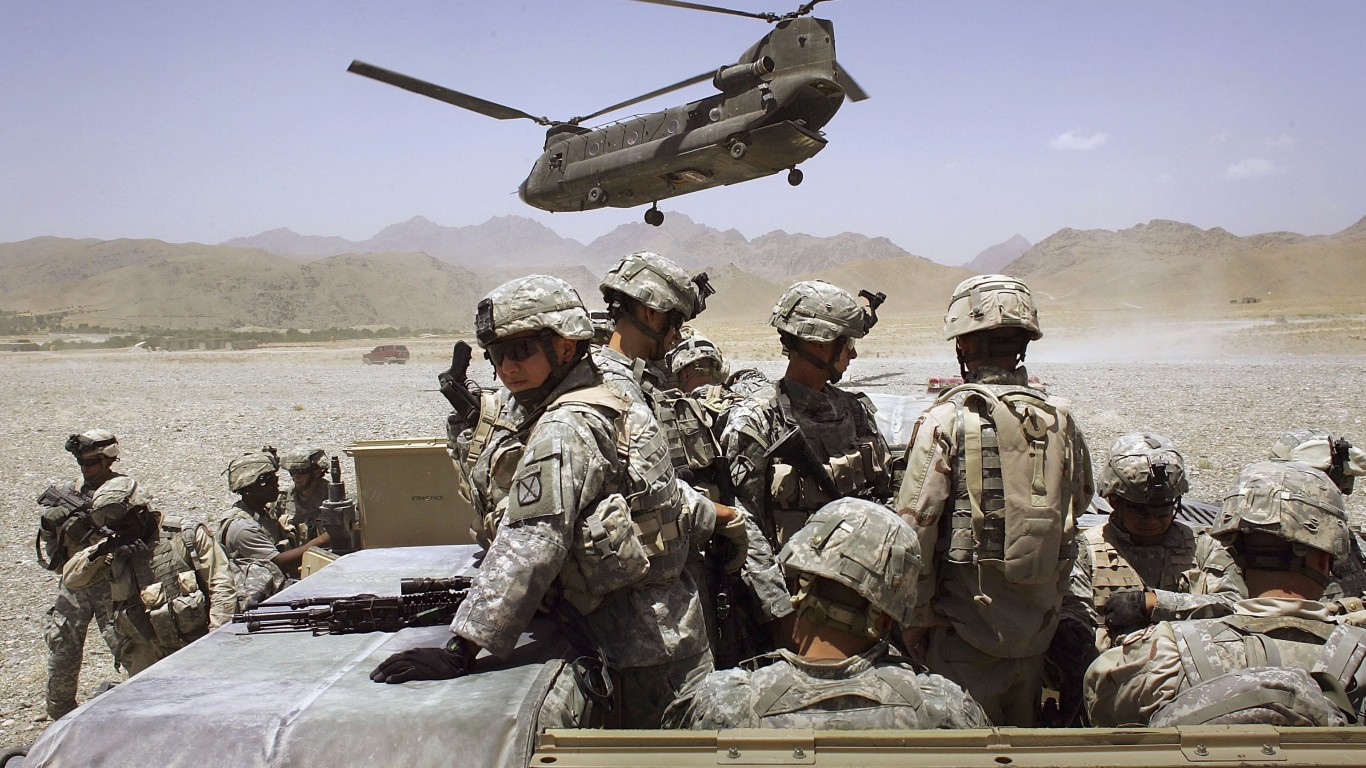
Afghanistan
> Date: 2001-2021
The U.S. occupation of Afghanistan from 2001 to 2021, part of the Afghanistan War, aimed to topple the Taliban, rebuild core Afghan institutions, and reintegrate insurgents into Afghan society. The strategy largely failed, with high civilian casualties and a resilient Taliban presence. The occupation culminated with U.S withdrawal and the Taliban rapidly reclaiming power over the Afghan government, undoing any reforms implemented in the 20 years prior and reinstating many harsh policies, including pushing women out of public life and tolerating no dissent.
[in-text-ad-2]

Iraq
> Date: 2003-2011
The 2003 to 2011 U.S. occupation of Iraq, known as the Iraq War, aimed to dismantle Saddam Hussein’s regime, neutralize perceived threats from weapons of mass destruction (later found non-existent), and establish a democratic government. Though when the U.S. withdrew, the Baghdad government pledged to foster unity, the occupation contributed to intense sectarian conflicts and political instability.
Are You Ahead, or Behind on Retirement? (sponsor)
If you’re one of the over 4 Million Americans set to retire this year, you may want to pay attention.
Finding a financial advisor who puts your interest first can be the difference between a rich retirement and barely getting by, and today it’s easier than ever. SmartAsset’s free tool matches you with up to three fiduciary financial advisors that serve your area in minutes. Each advisor has been carefully vetted, and must act in your best interests. Start your search now.
Don’t waste another minute; get started right here and help your retirement dreams become a retirement reality.
Thank you for reading! Have some feedback for us?
Contact the 24/7 Wall St. editorial team.
 24/7 Wall St.
24/7 Wall St.
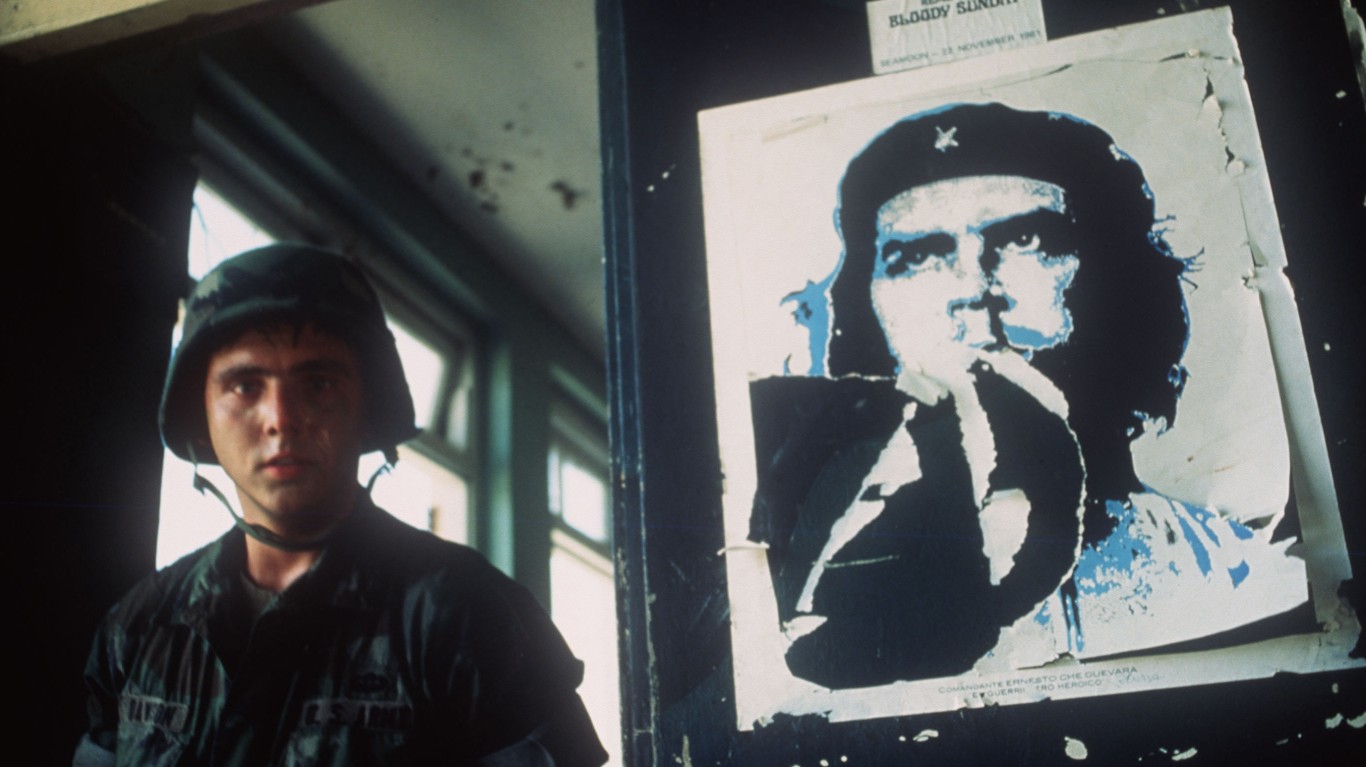
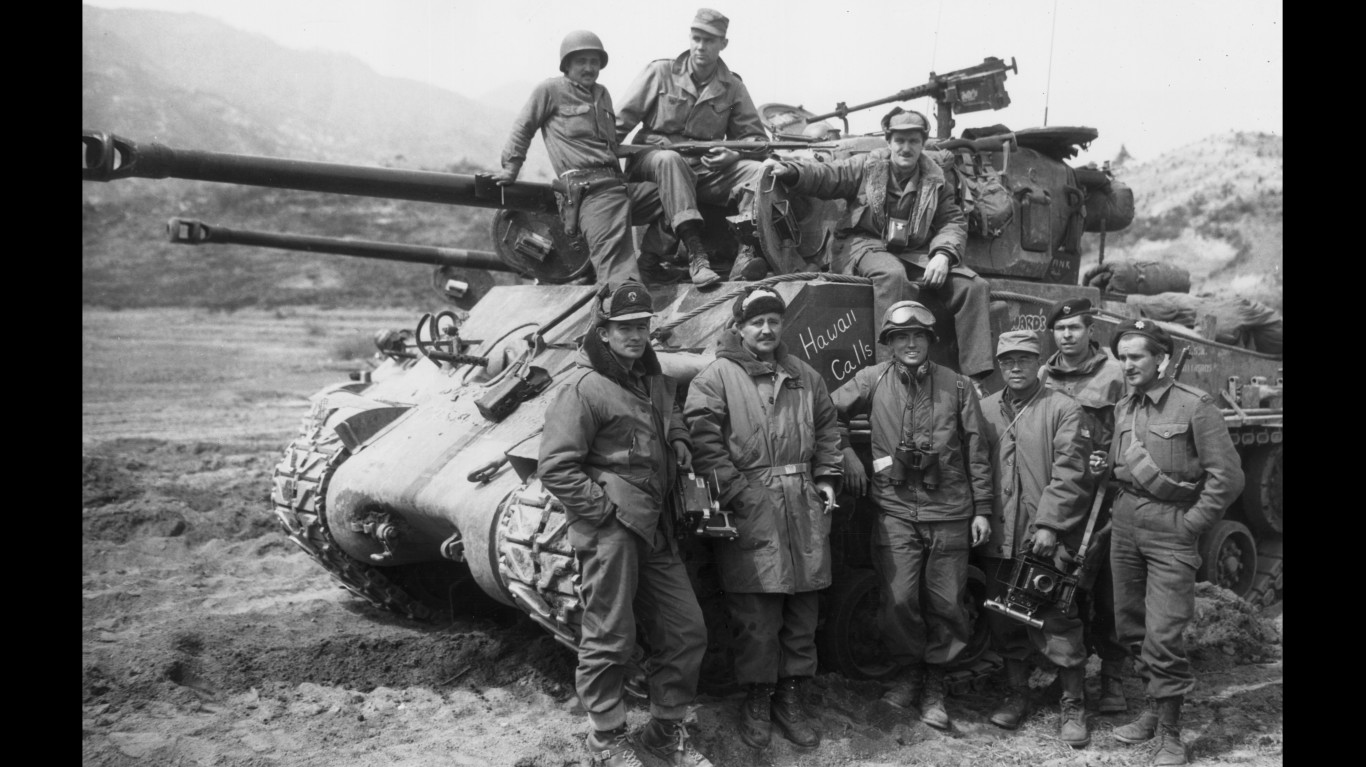 24/7 Wall St.
24/7 Wall St.
